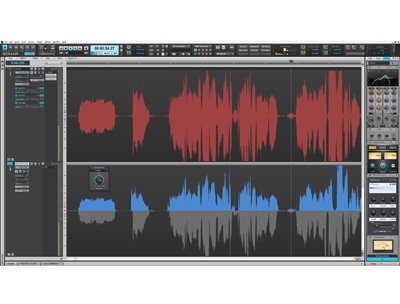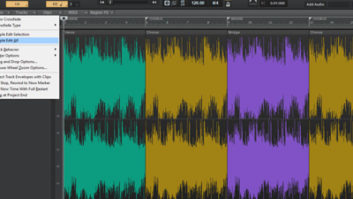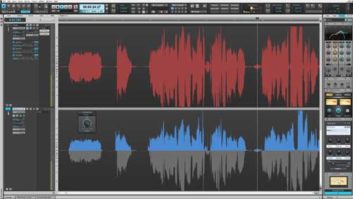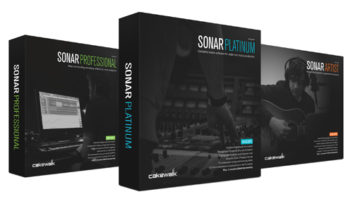
The much-anticipated release of SONAR is here. First, SONAR Version 8.5 morphed into the X Series, incorporating the Skylight overhaul to the user interface. X2 and X3 brought massive new features and capabilities to the table, which ultimately has landed us on what is alleged to be SONAR X4, now referred to as SONAR Artist, Professional and Platinum, with the latter reviewed here.
Members Only?
The forums are humming with speculation; the message boards are chiming with celebration and tantrum alike. SONAR is now available in a membership model: $49.99 per month, or $499 annually, will buy you a slice of some SONAR Platinum. Why? Although some of us aren’t quite there yet, the fact is physical DVD installers are a dying medium. Resellers don’t want to waste shelf space, and manufacturers don’t want to inflate costs with packaging and printing. Besides, you still have to download updates and patches, so what is the value proposition of having physical media? And besides, it has worked for Adobe…
The jettison from the numerical nomenclature of SONAR would indicate Cakewalk’s intention to move to a streamlined software version. With this model, updates and improvements can be pushed at any time, as can new feature sets, as opposed to the cumbersome annual release of a new version. Granted, there will be that group of users who would prefer to purchase a release or upgrade at a flat price, and keep it until it has grown outdated. Cakewalk agrees. Unlike the Adobe subscription model, SONAR is a financed membership. Pay for the year, and keep your software, even if you choose to opt out after the year is up. In essence, you are financing your software monthly, except your updates and add-ons are pushed directly to your system. After the yearlong membership is up, your software will not be crippled or cease functionality.
Workflow Improvements
The first thing you’ll notice upon installation is a new feature called the “Cakewalk Command Center.” Reminiscent of a Native Instruments installer, the Command Center performs a scan and evaluation of your system to see what is being installed, leaving nothing up in the air as you start integration. For those updating, the experience is the same.
After installation is complete, and you have launched the application, at first glance, nothing seems to be out of the ordinary. There is no learning curve, as when Skylight debuted in X1. The biggest change, which in my opinion is one of the best new features, is the modular capabilities of the UI. The Control Bar is now completely customizable to adapt to the user’s workflow. One of my complaints about previous iterations of SONAR was the difficulty to translate workflow from a desktop to a laptop, or even project to project. The new redesigned Control Bar is optimized to adapt to your specific engagement. I would have liked to see templates for multi-monitor, mobile and desktop formats in the launch screen, but these are easy enough to create manually by using the Screensets feature.
Perhaps the most functional new feature is Mix Recall. We’ve all been there—vocals up, vocals down, more snare, radio edit, instrumental, options galore. My project files would often outnumber my track count by the time I was done with a session. Mix Recall does this in a single project file. Similar to digital console automation, Mix Recall saves variable mixes as Scenes, giving you the option to switch between scenes with a simple click. The days of closing out a mix, opening another project, bouncing them all, and auditioning them as WAV files are over. This is an improvement worth getting excited over; it’s real world functionality that can be applied and translated into a tangible return on investment.
To cater to the beat heads, EDM cats and MIDI monkeys of the world, Cakewalk brings three separate new features to the table. Piano Roll, which is Cakewalk’s pet name for its MIDI editor, received a makeover, giving a more polished appearance to the layout. Cakewalk has also added a new tool to the Smart Tool palette craftily named Pattern Tool. Pattern Tool allows you to paint MIDI, beats, loops and so on into Piano Roll, eliminating the standard copy/paste method. The third feature is AudioSnap, SONAR’s quantize tool. While this isn’t a new feature, the new UI and detection algorithm have drastically improved functionality vs. previous versions. To sum this up, Piano Roll still lacks the fluidity and comprehensive intuition you would find in a DAW like Nuendo or Ableton. However, combine the Pattern Tool and Piano Roll’s fresh look with the improved AudioSnap feature, and SONAR’s MIDI environment just stepped its game up big time.
Old and Improved
While these aren’t necessarily new bells or whistles, Addictive Drums 2, Melodyne, and the Blue Tubes Bundle and Nomad Factory collection of audio processors have stellar sounds while remaining low-impact. Next, SONAR’s ProChannel has a new reverb module called REmatrix Solo. Based on Overloud’s REmatrix, the convolution reverb offers impulse responses created by MoReVox sound designers, with zero-latency processing. This rounds out the ProChannel module stack quite nicely.
Another new addition is a Region FX named VocalSync, a single-knob utility that allows you to sync vocals to a guide track. You can clean up vocals, link harmonies, create a double effect for emphasis, and even match dialog and overdubs to film frames. In the realm of a functional, real-world application, VocalSync is a welcome addition.
Finally, a feature that appears to be derived directly from user requests is the ability to customize your sends and FX stacks in console view. Previously, you would have to click the plus sign to view inserts on a given track. Now, similar to Cubase, Pro Tools or even Studio One, all of your FX stacks are lined up for your viewing pleasure.
Into the Lab
My first goal in the review process was to set up a manageable session on both my laptop and workstation. As compared to previous versions of SONAR, this is the first time my desktop-to-mobile transitions were utterly seamless.
The new REmatrix reverb module is quite impressive—clean, easily controlled and a nice complement to the barrage of vocals common to Queen sessions. My next step was setting up VocalSync to help level and layer the background vocal tracks. While this wasn’t a miracle tool, it did a decent job in controlling sibilance tails.
To test the performance of SONAR Platinum vs. SONAR X3, I loaded the exact same session on both versions and recorded the average processor and memory utilizations. Using an Intel E5-1650 V3 processor and 16GB of RAM, X3 came in at roughly 7GB of memory usage at an average workload of about 65-percent CPU. Within SONAR Platinum, memory came in around 6.5GB and 58-percent CPU usage. While this wasn’t a huge jump in performance, it was a large enough delta to be referenced.
Keeping It Real
The latest release of SONAR is quite unique. Although more in line as an advance on X3, this new flavor of SONAR achieves performance and capabilities that parallel any of its competitors. Seeing Cakewalk’s DAW evolve as it has illustrates one very important fact about the SONAR software and the Cakewalk organization: These folks pay attention to their community. Most of the changes and tweaks are seemingly derived directly from the forum requests. From install to mixdown, this version of SONAR feels more mature.
Command Center made installation feel as though it was an autopilot function. The sound suites and third-party additions, as always, provide a great value proposition. One could literally produce products on par with any other collection right within SONAR, void of any additional content. While no one product can be everything to everyone, SONAR Platinum comes darn close.
The biggest overall improvement to SONAR is the incorporation of flexible, functional workflow within the UI. These improvements alone would be enough to justify my upgrade. Cakewalk continues to raise the bar for the modern DAW, and proves yet again its ability to evolve despite the tumultuous state of today’s pro audio industry.
Jami McGraw is a New York–based audio engineer/producer/musician.



